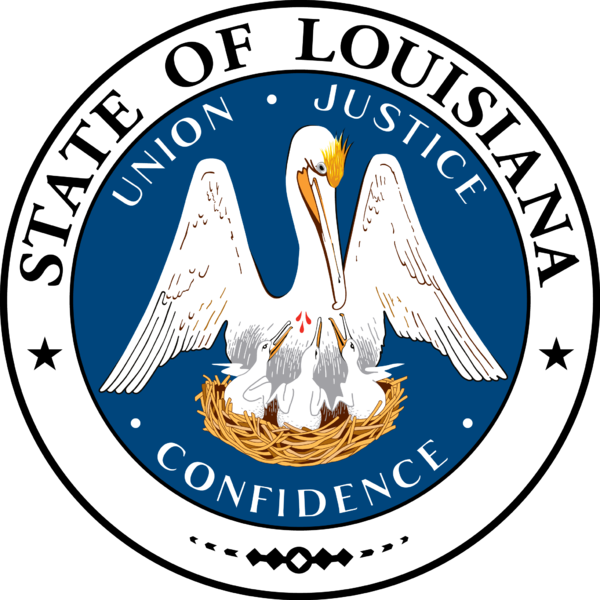
French explorers, and in particular Cavelier de La Salle, who wanted to honour their King Louis XIV, called Louisiana the region they discovered when they went up the Mississippi.

It was then a vast territory that included the entire Mississippi Valley and extended westward to the Rocky Mountains; it took more than a century to know its boundaries and resources. In 1763, France ceded Louisiana to Spain, but took it over at the beginning of the 19th century. Bonaparte then decided to sell it to the Americans who were interested in the port of New Orleans; the deal was concluded on May 3, 1803 for eighty million gold francs.

From this region, the United States will make several states. The State of Louisiana, populated by settlers of French, Spanish and American origin, developed in the 19th century thanks to its location at the mouth of the Mississippi River and the extension of the cotton kingdom. The decline occurred in the aftermath of the Civil War, when railways replaced river traffic. It was not until the modern era that oil and the industries that accompanied it, as well as a diversification of agricultural production (sugar cane, cotton, etc.), made Louisiana an important part of the Union.
In stark contrast, due to its small size (125,675 km2) and the vastness of historic Louisiana (French Louisiana extended across the Great Plains from the Gulf of Mexico to Canadian solitudes), the State of Louisiana, officially established in 1812, a few years after the transfer, essentially corresponds to the lower Mississippi River and its monumental delta. In 1990, it had 4,219,973 inhabitants.

The originality of the physical environment is combined with the French influence to create a particular rural environment: the elongated, almost land-lined plots, the farms aligned along the communication axes constituting very loose-meshed village streets, are similar to the Canadian rank to the French colonization.
Firmly attached to their language and customs, the French-speaking “Cadiens” farmers (“Cajuns” in English) had difficulty adopting the Anglo-Saxon civilization. But Louisiana is also a good example of a changing local sector.
Despite not entirely satisfactory climatic conditions (frost and especially floods), Louisiana is characterized above all by the cultivation of sugar cane, a tradition inherited from 18th century farmers.

From 1910 onwards, the vicissitudes of the sugar market and cryptogamic diseases led to the decline of this activity, accompanied by the intensification of the rural exodus. However, since 1945, the federal government has endeavoured to give new impetus to this culture, encouraged by the “Cuban adventure” since 1959. The concentration of farms and the progress of mechanization have made it possible to create vast areas that are in the hands of the large sugar companies. In addition, cotton cultivation has declined ahead of rice and soya, as well as in favour of cattle breeding. Fishery resources play an important role in government revenues.
However, the most spectacular transformation is the rise of industrialization, particularly between New Orleans and Baton Rouge, thanks to the presence of energy sources (oil, natural gas) and raw materials (salt, sulphur). In addition, the situation in the Gulf of Mexico allows the import of basic raw materials. In urban terms, however, the vast majority of recent households remain small: New Iberia, Houma and Morgan City serve mainly as intermediaries in the delta’s relations with the major centres of Mississippi.
Baton Rouge, the administrative capital of the State (219,531 inhabitants in 1990), proud of its university, is animated, like the coastal port complexes of Pensacola (Florida) and Gulfport (Mississippi), by colossal oil refineries; in 1993, its traffic reached 9,281,000 tons. The true regional metropolis is New Orleans (496,938 inhabitants in 1990). In 1993, its port traffic was 31,700,000 tonnes.
In addition to its commercial role, New Orleans has industrial activities focused mainly on petrochemicals, which causes serious water pollution. There are also agri-food industries, transport equipment factories and textile factories.

